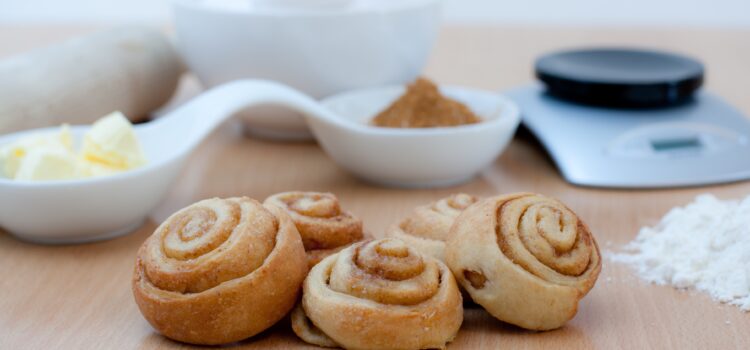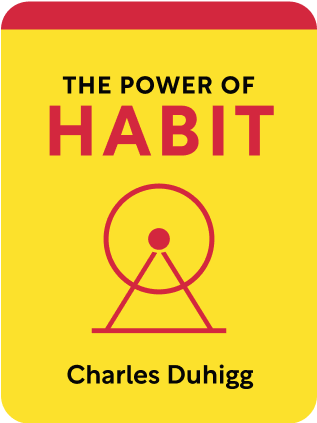

This article is an excerpt from the Shortform book guide to "The Power of Habit" by Charles Duhigg. Shortform has the world's best summaries and analyses of books you should be reading.
Like this article? Sign up for a free trial here .
Are you looking for The Power of Habit examples? How can these case studies demonstrate habit formation?
These The Power of Habit examples cover the habit loop, willpower, and habits in organizations. The examples can help explain how habit works and put habits in context.
Keep reading for the best The Power of Habit examples.
The Power of Habit Examples
These The Power of Habit examples are separated into three categories; habit loop examples, willpower examples, and habits in organizations. Each of the examples will help you understand the way we form habits, and why they’re so important.
Check out all the The Power of Habit examples.
Habit Loop Examples
These The Power of Habit examples focus on the habit loop.
Example 1: Tingly Toothpaste
First in The Power of Habit examples is toothpaste. In the early 1900s, American rarely brushed their teeth. It just wasn’t ingrained as a daily habit. Combined with processed foods, the lack of dental hygiene led to an epidemic of rotten teeth.Enter Claude Hopkins, a master advertiser who had made Palmolive and Quaker Oats into household names. Taking up the case of new toothpaste Pepsodent, he focused on building a new habit:
- Cue: run your tongue over your teeth. You’ll feel a film that discolors and decays your teeth.
- Routine: brush your teeth with Pepsodent
- Reward: end up with a beautiful smile
Pepsodent rocketed in demand. Before Pepsodent, only 7% of Americans owned toothpaste; 10 years after the ad campaign, the number jumped to 65%.
But it turns out this wasn’t the first time the cue had been used in advertising. Other brands had tried and failed with similar marketing.
The secret, it turns out, was the aftertaste of Pepsodent. With mint oil and citric acid, Pepsodent left a cool, tingling feeling after brushing teeth.
Customers of Pepsodent revealed that if they forgot to brush their teeth, they missed the tingling sensation. They craved this feeling. This drove the growth of Pepsodent over other toothpastes; and when other companies introduced mint to their toothpaste, Pepsodent’s market share dropped.
Example 2: Febreze and Cues of Bad Smells
When invented in the 1990s, Febreze was a magical product – it could remove bad smells from fabric, not just cover it up like other products. It seemed like a sure-fire win, an alternative to dry cleaning and laundry. The team designed ads with cues and rewards, focusing on the cue of bad smells. The reward was clothing that no longer smelled like cigarettes, or sofas that no longer smelled like dog.
But the ads failed. Sales didn’t bump at all, and they coasted along at low levels.
They discovered that the cue failed – people perpetually around bad smells couldn’t actually detect the cue any longer. If you’re a long time smoker, your nose just becomes less sensitive to smoke smells. This meant the habit couldn’t fully form.
So the Febreze team tried a different strategy. Instead of attacking the smell problem, they repositioned the product as the proper reward to a cleaning routine. They added more perfume to Febreze, and they encouraged customers to spray Febreze after freshly making a bed or vacuuming. Over time, customers associated cleanliness with the smell of Febreze.
Then the smell became a craving. If it didn’t smell nice like Febreze, it didn’t really seem clean.
This habit change catapulted the use of Febreze – it wasn’t just used when bad smells happened, it was used habitually after every cleaning. This is one of the The Power of Habit examples that helps us understand the habit loop.
Example 3: Cinnabon
In malls, Cinnabon locates its stores away from other restaurants. They want the smell alone wafting through the hallways to act as a cue, then trigger a craving for the cinnamon roll. Once the customer finally sees the Cinnabon store, the routine to buy a cinnamon roll activates and they get their sweet reward.
The Power of Habit Examples on Bad Habits
These The Power of Habit examples focus on bad habits and how to overcome them.
Example: Alcoholics Anonymous
One of the most successful examples of habit change is Alcoholics Anonymous. Its famous 12-step program forces the recovering alcoholic to go through a few important steps. For example, step 4 asks to make “a searching and fearless inventory of ourselves,” and step 5 asks to admit “to God, to ourselves, and to another human being the exact nature of our wrongs.” In these steps, it’s hard not to make a list of all the reasons you drink, and the urges that started the behavior.
Often, alcoholics drink not because of the physical feeling of intoxication, but because of the accompanying emotional relief – an escape from your everyday problems, a distraction, catharsis.
To change the habit, AA forces its members to replace the routine of drinking with engaging socially at meetings. Their goal is to attend 90 meetings in 90 days, and new members get a dedicated sponsor as a personal companion. The recovering alcoholic can keep the same cues (like anxiety about a life problem) and rewards (distraction from the problem or relaxation). But the routine is entirely different, and much healthier.
Example: Winning the Super Bowl with Habits
In 1996, the Tampa Bay Buccaneers were one of the worst football teams in the NFL. Tony Dungy arrived as head coach with a new strategy – force the players to develop deeply ingrained habits so they don’t ever have to think during a game.
For instance, on each play a defensive lineman, would focus on only a few cues – the positioning of his opponent’s back foot, the distance between him and the next player. Depending on what the cues are, the player then has an automatic habit of reacting. If it’s a pass play, he’ll immediately circle around the offensive line and sack the quarterback. He doesn’t need to think about it – he can just explode.
If these could truly become habits, then the behavior would be automatic. And Coach Dungy believed that their team didn’t need to have a more complicated playbook – they just needed to be faster. Football plays happen in fractions of a second, and thinking gets you in trouble.
This strategy, and countless sessions of drilling habits until they became automatic, ultimately led the Buccaneers to the Super Bowl. Coach Dungy then took his techniques to the Colts, who won a Super Bowl themselves.
The Power of Habit Examples of Willpower
These the The Power of Habit examples focus on willpower.
Example: Patients Break Through a Pain Point
This insight came from a research study of orthopedic patients in Scotland. After going through a hip replacement, exercising is important to avoid blood clots and developing scar tissue. However, it’s extremely painful, so many patients skip the practice. In an experiment, a researcher gave each patient a book with blank pages and instructions: “My goals for this week are _______? Write down exactly what you are going to do. For example, if you are going to go for a walk this week, write down where and when you are going to walk.”
Three months later, the patients who had filled in the books were walking twice as fast as the control group, and getting out of their chairs three times as fast. Within all the plans written on the pages, the key was filling in specific plans about how to deal with predicted pain points.
For example, one patient trying to walk to the bus stop each day wrote down every obstacle and what pills he would take if the pain was too much. The patients who didn’t write this down ahead of time never thought specifically about how to deal with the major pain points, and they didn’t have the willpower to push through in the moment.
Example: Developing Willpower in Starbucks Baristas
For many retail chains like Starbucks, the front-line baristas join the company as their first job. They’re often not accustomed to the stress that angry customers and complicated orders bring. They may have come from environments that didn’t actively promote self-discipline and willpower. This can lead employees with lower willpower to snap at customers, lowering customer experience.
The key, as many companies like Starbucks have found, is to define routines for employees to use in rough patches. Say a customer is irate that you’ve messed up his venti double shot no foam soy extra hot latte with light whip and splenda. You want to scream at his face, but instead Starbucks has trained you to follow the LATTE method:
- Listen to the customer
- Acknowledge the complaint
- Take action by solving the problem
- Thank the customer
- Explain why the problem occurred
In training, managers drill new baristas to picture realistic stressful scenarios and to follow the LATTE method. When the real stressor comes, the baristas know how to push through it using a classic cue-routine-reward habit loop.
Examples of Habits in Organizations
This last example focuses on habits in an organization.
Example: Habits in the Operating Room
In 2000, Rhode Island Hospital, the teaching hospital of Brown University, was a wreck. Some doctors habitually bullied nurses, chastising them for correcting the doctors.So to avoid punishment, nurses had secret habits – they communicated through marker color who the bad doctors were (green for good, black for bad). Around bad doctors, you needed to keep quiet when they got pushy. Nurses also quietly covered for doctors, fixing incorrect medication doses and fixing doctors’ unintelligible handwriting.
Ultimately, this led to several high profile reports on mistakes. In multiple cases, surgeons operated on the wrong side of the head, with one case leading to death.
A crisis had occurred. The entire surgical ward was shut down for a day for training. New habits were instituted, like checklists for every operation and video cameras recording every surgery. At this time of crisis, no matter how vehemently the doctors opposed these practices, the elevation of patient safety to supersede the organization led to radical change.
These new practices dramatically improved patient safety and reduced medical error, and likely led to better morale across the team.
Now that you have read several The Power of Habit examples, you can continue to learn about how and why we form habits.

———End of Preview———
Like what you just read? Read the rest of the world's best book summary and analysis of Charles Duhigg's "The Power of Habit" at Shortform .
Here's what you'll find in our full The Power of Habit summary :
- The 3 steps to change your habits
- Why habits are at the root of success in football
- How social movements are just an expansion of habits from individuals to communities






